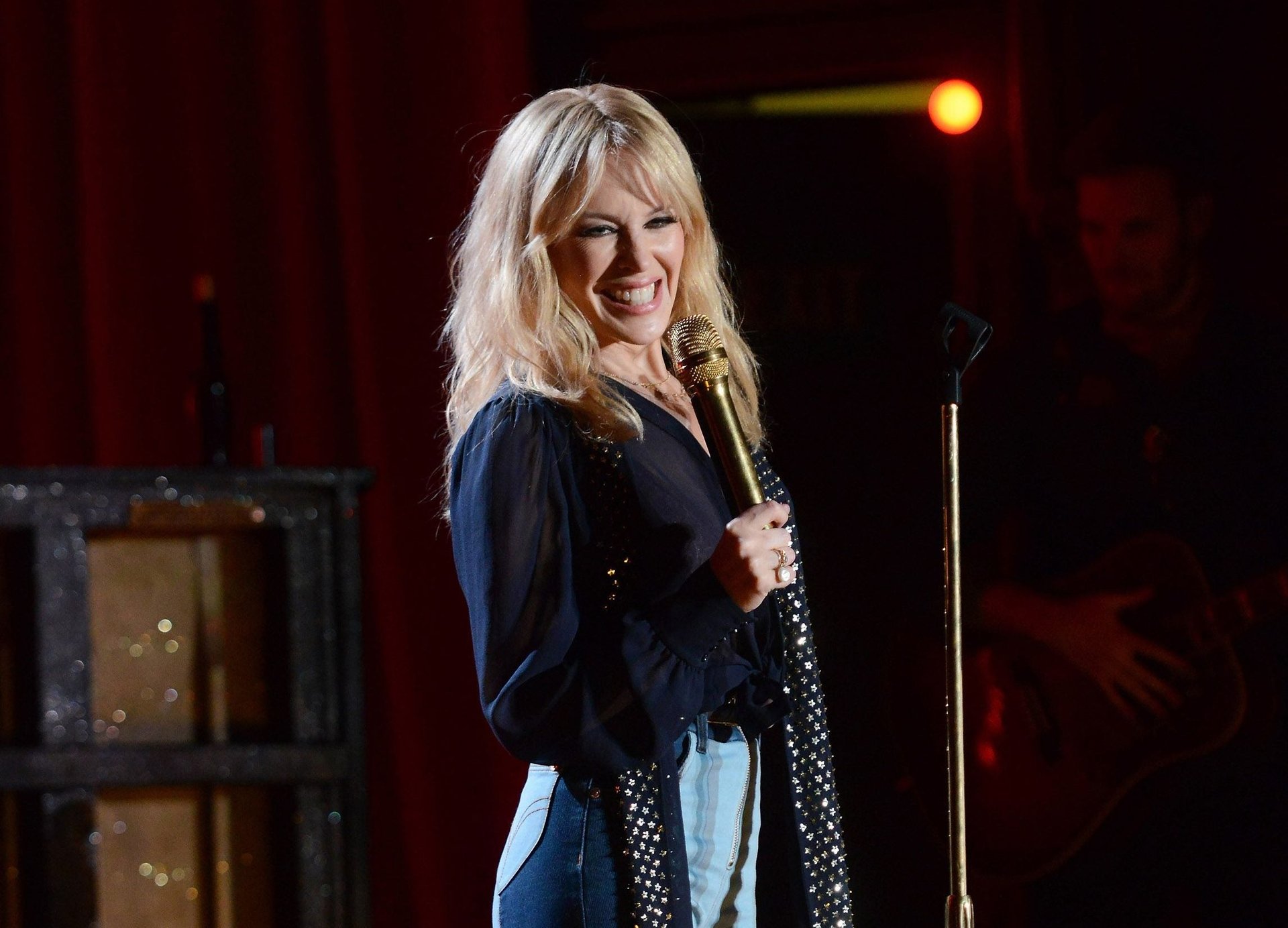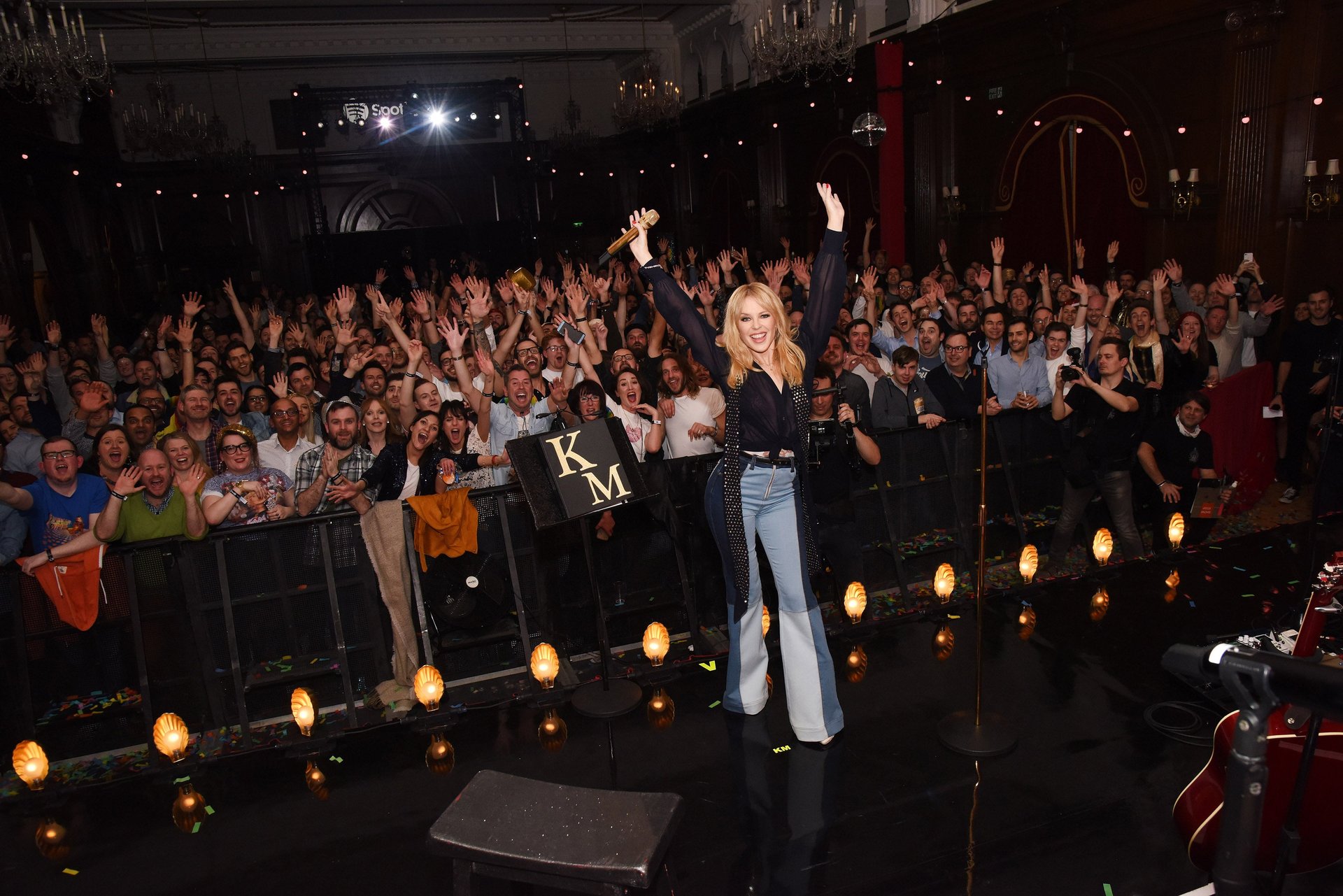Spotify and Kylie Minogue reminded me that I’m a fan, not just a click
So it turns out I’m one of the top Kylie Minogue listeners on Spotify. I found this out one morning recently, when I sleepily opened the streaming app to start my day with the pop star’s new single, “Dancing.”


So it turns out I’m one of the top Kylie Minogue listeners on Spotify. I found this out one morning recently, when I sleepily opened the streaming app to start my day with the pop star’s new single, “Dancing.”
There I found an invite to a free concert in London for Kylie’s “biggest fans” in just four days time. Have I really listened to “Slow” (her best song, FYI) that many times? It appears so. As someone who never wins anything, it pretty much made my weekend. But I soon realized that it wasn’t about winning at all, it was simply a matter of data—and smart customer service.
The concert itself was everything I could have hoped for: infectious tunes from Kylie’s classic bubblegum pop to her recent country turn, and plenty of playful banter between the star and the crowd. We got her to sing her cover of Kenny Rogers’ and Dolly Parton’s “Islands in the Stream” not once, but twice! As the show came to a close with golden confetti raining down, Kylie trotted out her best rodeo-inspired dance moves, dressed in double denim that would do Dolly proud.
Amid that euphoria, I felt deeply connected to all the other Kylie superfans in the room. But not just to them: to my 10-year-old self, going to the record store to buy the latest Britney Spears single. And to every fan everywhere in the world, from Beatlemaniacs to Beliebers.
And in that moment I became not just a fan of Kylie, but also a fan of Spotify.
And that’s really the point. Spotify, and plenty of other companies, are obsessed right now with the brand-building potential of “superfans.” We’re living in a new “fandom-based economy,” wrote Zoe Fraade-Blanar and Aaron M Glazer. Which makes perfect sense, as tech giants face a fundamental problem: How do you build brand loyalty when your only connection with your customers is via a tiny screen?
Spotify’s answer is an effective—and lucrative—strategy of using the data on its 150 million-plus users to bring artists and fans together in new ways.
The company’s “Fans First” program markets exclusive merch, early access to tickets, and other perks to superfans like me. Meanwhile, Spotify for Artists, the streaming service’s answer to Google Analytics, gives artists and record labels detailed insights into who is listening to their music (as well as where, how, and with what level of engagement).
Essentially, Spotify is building human experience back into a world of algorithms and automation. It has recognized that there’s a powerful emotional connection between artist and fan. Being the conduit for all that good feeling confers some of it upon Spotify itself.
Kylie isn’t the only one playing along. Justin Timberlake has performed for his Spotify fans. Ed Sheeran baked cookies with his fans last year. And last month, the country star Kacey Musgraves met her London fans for afternoon tea and a playback of her new album, Golden Hour. For up-and-coming artists, Spotify has hosted small shows for fans at their Boston headquarters.
Fandom is nothing new, but its nature has changed. ”Each successive technological gain has made fandom both more accessible and more social, but it has been part of human cultural activity throughout recorded history,” Fraade-Blanar and Glazer note in their book Superfandom: How Our Obsessions are Changing What We Buy and Who We Are.
The social media age has spawned a particularly active form of fandom. Consumers are no longer satisfied by simply consuming; they also crave participation and experience. And in an age where we have unprecedented access to the lives of celebrities and creators, brands are looking for similar intimacy.
On that random Thursday night in London, I remembered what it feels like to be a fan. And for that, I’m thankful to Spotify—and probably a whole lot more loyal, too.
